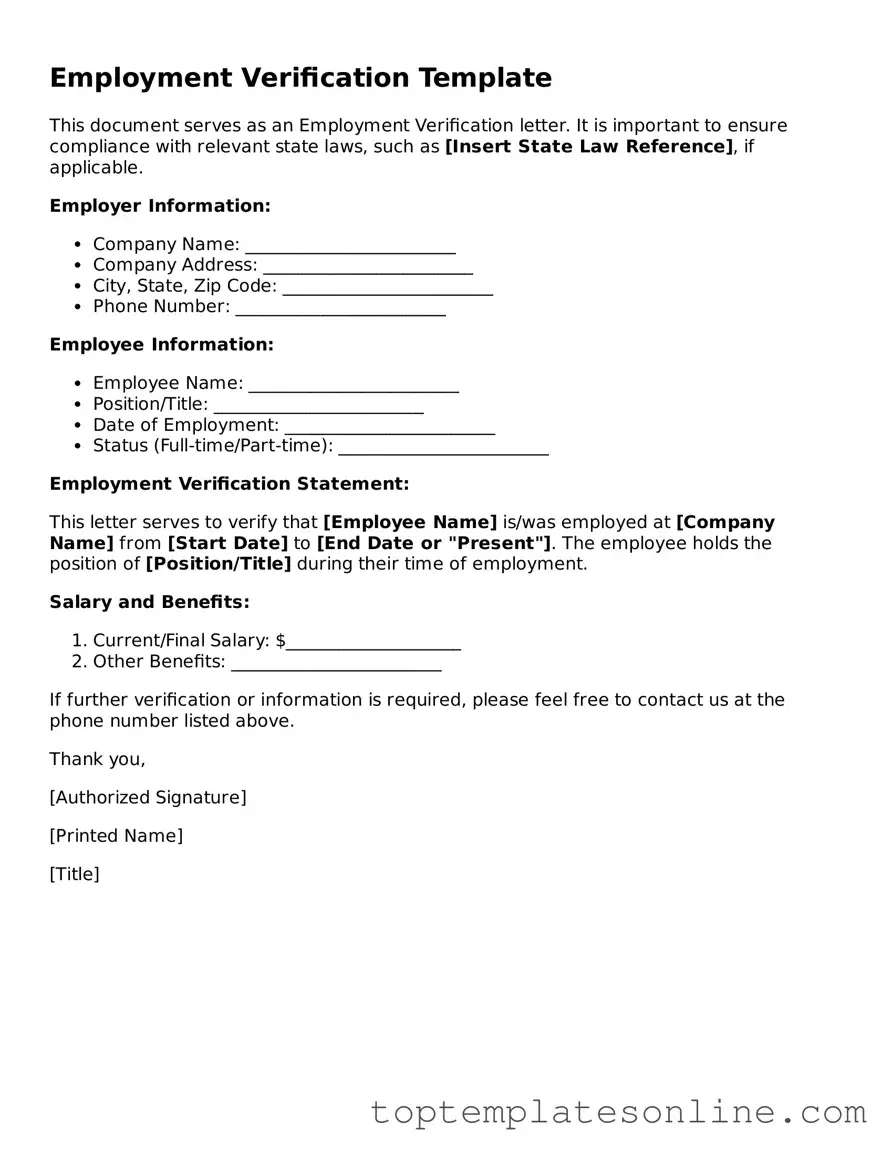Attorney-Approved Employment Verification Form
The Employment Verification form is a document used to confirm an individual's employment status, job title, and duration of employment. This form is often requested by lenders, landlords, or other entities that require proof of income or employment. Completing the form accurately is essential for ensuring that the information provided is reliable and up-to-date.
Customize Employment Verification Here
